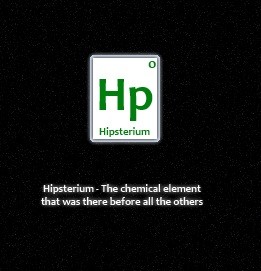Chemistry World commissioned me to report on this new EDC and used a short version of my story. Here’s the full pre-edit.
German researchers have used a combination of bioassay work and high-resolution mass spectrometry to pin down the source of endrocrine-disrupting behaviour in 18 bottled water products. Of 24,520 suspect chemicals, the one that showed consistent results across all tests and displayed anti-androgenic and anti-estrogenic activity is di(2-ethylhexyl) fumarate (DEHF).
Endocrine-disrupting chemicals that interfere with an organism’s hormonal systems have been implicated in developmental and reproductive effects seen in nature and human medicine. More recently, suspicions have been raised that they might also increase the risk of cancer, cardiovascular and metabolic disorders. Of particular concern and public controversy have been bisphenol A (BPA) and the phthalates, organic compounds that mimic sex hormones.
Now, Martin Wagner and Jörg Oehlmann of the Goethe University Frankfurt, Frankfurt am Main, and Michael Schlüsener and Thomas Ternes of the German Federal Institute of Hydrology, have turned their attention to bottled water sold in polyethylene terephthalate (PET) bottles given growing concerns that such products might contain worrying levels of EDCs. Circumstantial evidence has suggested that these products might contain steroid receptor agonists and antagonists. Unfortunately, biological data cannot provide evidence of specific culprits that might then be evaluated toxicologically. That requires the focus of the analytical chemist.
As such, Wagner and colleagues have obtained data on the antiestrogenic and antiandrogenic activity of 18 bottled water products. using reporter gene assays for human estrogen receptor alpha and androgen receptor. 13 of the 18 products tested displayed antiestrogenic activity, while 16 caused antiandrogenic activity at up to 90% activity against the androgen receptor. The researchers then combined the data from these assays with non-target HRMS. The unequivocal spectra suggested the presence at trace amounts of a possible 24,520 different chemicals. Of these suspects, the team was able to narrow the field to a single compound by carrying out a mass spectrometric simulation, in silico. This allowed them to home in on DEHF as the only possible EDC giving rise to the relevant biological data and the mass spectrum.
They confirmed the presence of this compound and isomers of dioctyl fumarate and maleate using chemical standards against which they tested the mass spectra. However, DEHF is known only as an antiestrogenic compound, which implies that another so far unidentified EDC must be present in 16 of the 18 samples investigated.
Wagner points out that non-disclosure by manufacturers means that the researchers do not know how PET bottle composition varies between producers in terms of additives and plasticisers. “The proprietary composition of polymers used as food contact materials is a major obstacle when investigating the leaching of chemicals,” he told CW: “We need to identify the compounds without knowing what the original polymer composition looked like.”
He can only speculate on the source of the DEHF and other fumarates and maleates as not much data is available, indeed they detected endocrine activity in glass bottles with plastic lids too. “My best guess is that it is part of a surfactant used in the bottling process,” he says. “It might also be used as an alternative plasticizer or processing aid in the manufacture of polymers.”
“This work is a “tour de force” in identification of endocrine disruptors in packaged materials,” EDC expert Bruce Blumberg of the University of California Irvine told CW. He suggests that, “It is a bit early to make any strong inferences about how detrimental these chemicals will be toward human health,” but adds that “It is certain that they are not beneficial.” Moreover, Blumberg believes that this type of analysis, “will be very important for our future understanding of what chemicals we are routinely exposed to and which of these pose hazards of being endocrine disruptors.”
Wagner asserts that he is no friend of the chemophobia often triggered by such studies. “Based on the current knowledge, we cannot conclude on potential health risks associated with the EDCs in bottled water. We just need more research here.” He suggests that public concern should focus more on what he refers to as the astonishing gap in knowledge of EDCs and other chemicals that leach from food contact materials. “Clearly, societies (and the authorities) need to pay much more attention to this issue to reduce the human exposure to chemicals,” he told us. “The leaching of chemicals from plastic food packaging is a complex issue, both chemically and politically,” he adds. “Just look at the ‘battle’ on bisphenol A. Clearly, this is not a scientific issue anymore, now it is just about the politics.”
 Wagner M., Schlüsener M.P., Ternes T.A., Oehlmann J. & Picard D. (2013). Identification of Putative Steroid Receptor Antagonists in Bottled Water: Combining Bioassays and High-Resolution Mass Spectrometry, PLoS ONE, 8 (8) e72472. DOI: 10.1371/journal.pone.0072472.s015
Wagner M., Schlüsener M.P., Ternes T.A., Oehlmann J. & Picard D. (2013). Identification of Putative Steroid Receptor Antagonists in Bottled Water: Combining Bioassays and High-Resolution Mass Spectrometry, PLoS ONE, 8 (8) e72472. DOI: 10.1371/journal.pone.0072472.s015
Worrying molecule found in bottled water.

